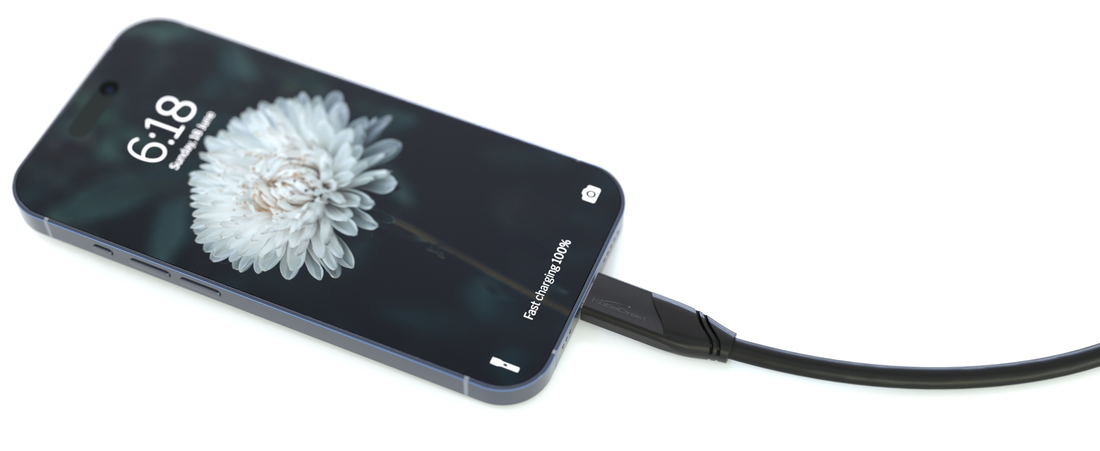
TETHERING: A MOBILE WIFI HOTSPOT
Share

In today's digital world, having access to the internet anytime and anywhere is becoming increasingly important. Whether traveling, during a network outage at home, or while on the go at a café – a stable internet connection for a laptop or tablet is often needed quickly. This is where smartphone tethering comes into play.
In this article, we will explain in detail and in an easy-to-understand way what tethering is, which technologies are available, and how to set it up.
What is Tethering?
Tethering refers to the use of an internet-enabled device, usually a smartphone, to provide internet access to other devices such as laptops, tablets, or even other smartphones. The smartphone acts as a kind of mobile hotspot through which the connected devices can establish an internet connection.
Essentially, with tethering you use your phone’s mobile data connection to share it with others. Tethering is a practical solution when no Wi-Fi with internet access is available, but mobile internet is.
Technologies for Tethering
Depending on the device and your needs, there are different ways to set up tethering:
- Wi-Fi (Wi-Fi Hotspot)
- Your smartphone creates its own Wi-Fi network that other devices can connect to.
- Advantages: Fast, multiple devices can connect simultaneously, good range.
- Disadvantages: Relatively high battery consumption, speed may decrease with multiple users.
- Bluetooth Tethering
- The connection is established via Bluetooth.
- Advantages: More energy-efficient than Wi-Fi, stable connection for one device.
- Disadvantages: Very low transfer rates, usually only suitable for one device at a time.
- USB Tethering
- Direct cable connection between smartphone and PC or laptop, usually via a USB-C cable or a USB-C to A cable.
- Advantages: Very stable and fast connection, the phone charges at the same time.
- Disadvantages: Only one device can be connected, physical connection required.
Setting up a Hotspot via Tethering
Setting up a hotspot via tethering differs slightly depending on the operating system:
- Android: Settings → Network & Internet → Hotspot & Tethering. Here you can activate Wi-Fi hotspot, Bluetooth, or USB tethering.
- iPhone/iPad: Settings → Personal Hotspot. You will then receive instructions for connecting via Wi-Fi, Bluetooth, or USB.
It’s important that mobile data is turned on and an appropriate data plan is available. On an iPad, tethering is only possible if the device has a SIM card for mobile internet access.
Typical Use Cases for Tethering
Tethering is useful in many situations:
- Working on a train or in a café without Wi-Fi availability
- Internet access while traveling for laptop or tablet
- Emergency solution during home internet problems
- Sharing the mobile connection with friends or colleagues
Requirements for Successful Tethering
Before using tethering, you should consider the following:
- Your mobile carrier must allow tethering (some plans may exclude tethering or charge separately for it).
- Your mobile internet connection should be sufficiently fast.
- The device should be up-to-date and compatible with the desired tethering options.
Limitations and Security Tips
There are some important aspects of tethering that you should not underestimate:
- Data plan: Especially video streaming or software downloads can quickly deplete your data volume.
- Battery life: Sharing the internet connection via Wi-Fi can heavily drain your smartphone’s battery.
- Security: Be sure to set up a secure password for your mobile hotspot to prevent unauthorized access.
- Roaming: Use tethering abroad with caution. Without suitable roaming options, high costs can arise quickly.
Frequently Asked Questions about Tethering
What is the difference between a hotspot and tethering?
Tethering generally refers to the process of using an internet-enabled device as an internet source for others. The term hotspot specifically refers to the Wi-Fi version of tethering. Simply put: every hotspot is tethering, but not every tethering is a Wi-Fi hotspot – as tethering is also possible via Bluetooth or USB.
Is tethering free?
Tethering itself does not incur additional costs as long as your plan allows it. However, it does consume your regular mobile data volume. Be sure to check if your provider has defined specific restrictions for tethering or may charge extra for it.
Do I need a cable for tethering?
A cable is only necessary for USB tethering. If you tether your device via Wi-Fi or Bluetooth, no cables are needed. However, the cable-based option can offer advantages such as a more stable connection and simultaneous charging of your smartphone.
More Helpful Tips about Tethering
- Use tethering apps for Android to better monitor or limit connections, for example.
- When using tethering intensively, it’s advisable to carry a mobile power bank to protect your smartphone’s battery.
- Update your device’s software regularly to avoid security gaps in your mobile hotspot.
Conclusion: Flexible Internet Access with Tethering
Tethering is a practical solution for establishing an internet connection for your laptop, tablet, or other devices when on the move or in emergencies. Whether via Wi-Fi, Bluetooth, or USB – you have different options depending on your needs. Just pay attention to your data plan, battery status, and the security of your connection. With the right knowledge, tethering quickly becomes an indispensable helper in everyday mobile life.
